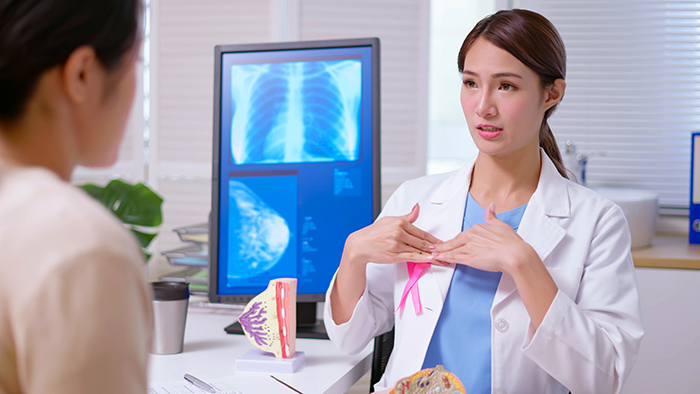Importance of performing breast self-exams
October 10, 2023
//
SAE_Women
Approximately 30% of all new female cancers each year is breast cancer. According to the American Cancer Society, the chance a woman will die from breast cancer is about 1 in 39.
Early cancer detection is saving lives. Often, if breast cancer is found early, there are more treatment options, and those treatments may be less invasive.
All women should talk with their health care provider about the appropriate timing for screening mammograms, especially women who are age 40 or older or at high-risk. A schedule will be based upon your individual health.
While mammography is the best tool for early detection of breast cancer, it is beneficial for women to also perform breast self-exams at least once a month, even those who are under age 40. Although breast cancer mostly occurs among older women, about 9% of all new cases of breast cancer in the U.S. are found in women younger than 45 years of age, according to the Centers for Disease Control and Prevention.
A regular self-exam allows you to become familiar with how your breasts look and feel. This could help you feel an unusual lump, see discharge or alert you to a change in your breast health should something abnormal form.
In front of mirror
For more information about breast cancer, screening mammograms and support for women in need, visit nationalbreastcancer.org.
Early cancer detection is saving lives. Often, if breast cancer is found early, there are more treatment options, and those treatments may be less invasive.
All women should talk with their health care provider about the appropriate timing for screening mammograms, especially women who are age 40 or older or at high-risk. A schedule will be based upon your individual health.
While mammography is the best tool for early detection of breast cancer, it is beneficial for women to also perform breast self-exams at least once a month, even those who are under age 40. Although breast cancer mostly occurs among older women, about 9% of all new cases of breast cancer in the U.S. are found in women younger than 45 years of age, according to the Centers for Disease Control and Prevention.
A regular self-exam allows you to become familiar with how your breasts look and feel. This could help you feel an unusual lump, see discharge or alert you to a change in your breast health should something abnormal form.
How to perform a breast self-exam
In front of mirror
- Look at your breasts in a mirror with your arms at your sides. Then raise your arms over your head. Look for changes in the contour, swelling or dimpling of the skin between arm positions.
- Rest your palms on your hips and press firmly to flex your chest muscles. Look for dimpling, puckering or changes, particularly on one side.
- With the flat part of your pointer, middle and ring fingers, check the entire breast and armpit area by pressing with light, medium and firm pressure. Feel for any lumps, hardened knots or thickening of the skin.
- Repeat this process with the other breast and armpit.
- Place a pillow under your right shoulder and put your right arm behind your head. Using the flat part of your left pointer, middle and ring fingers feel around the right breast tissue, searching for any sensitivity, lumps or discharge from the nipple.
- Repeat these steps for your left breast.
For more information about breast cancer, screening mammograms and support for women in need, visit nationalbreastcancer.org.
